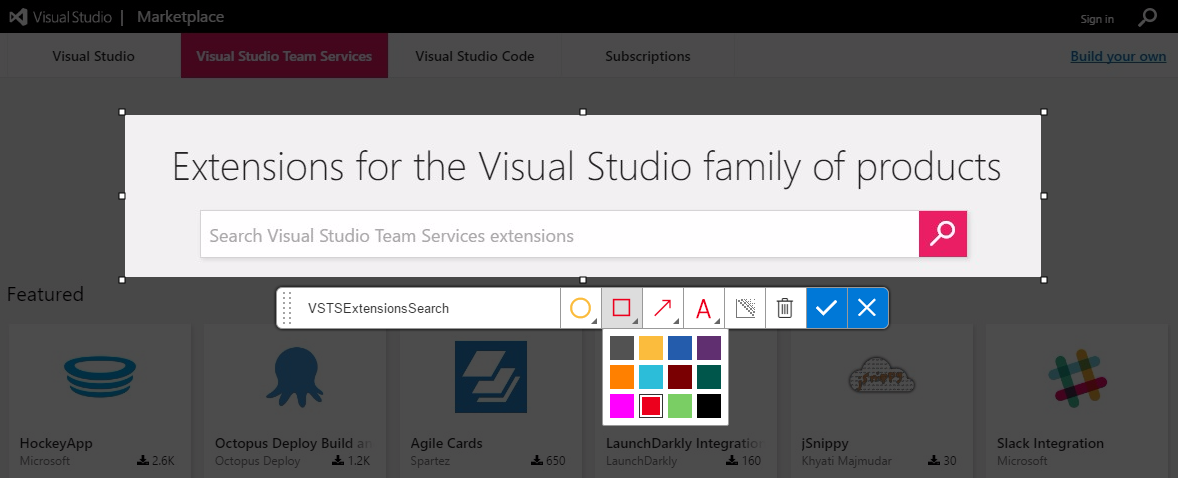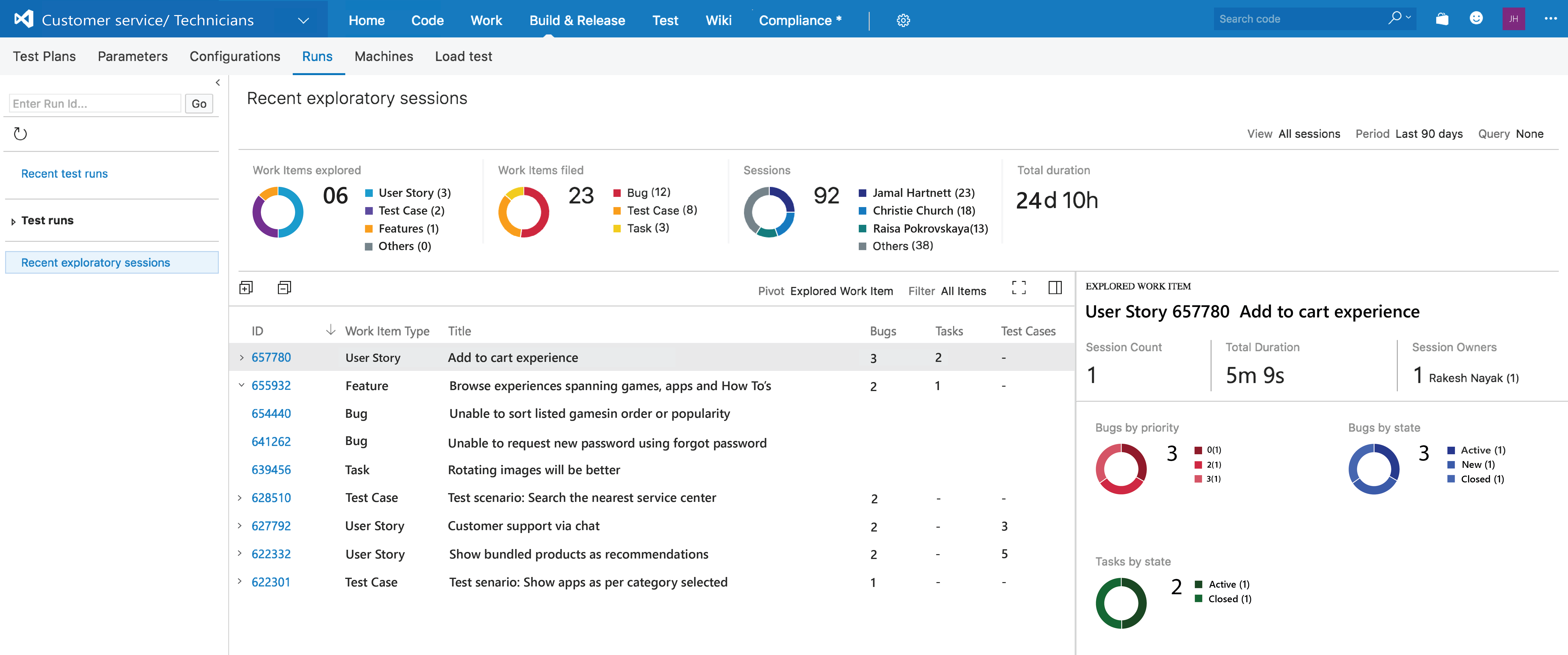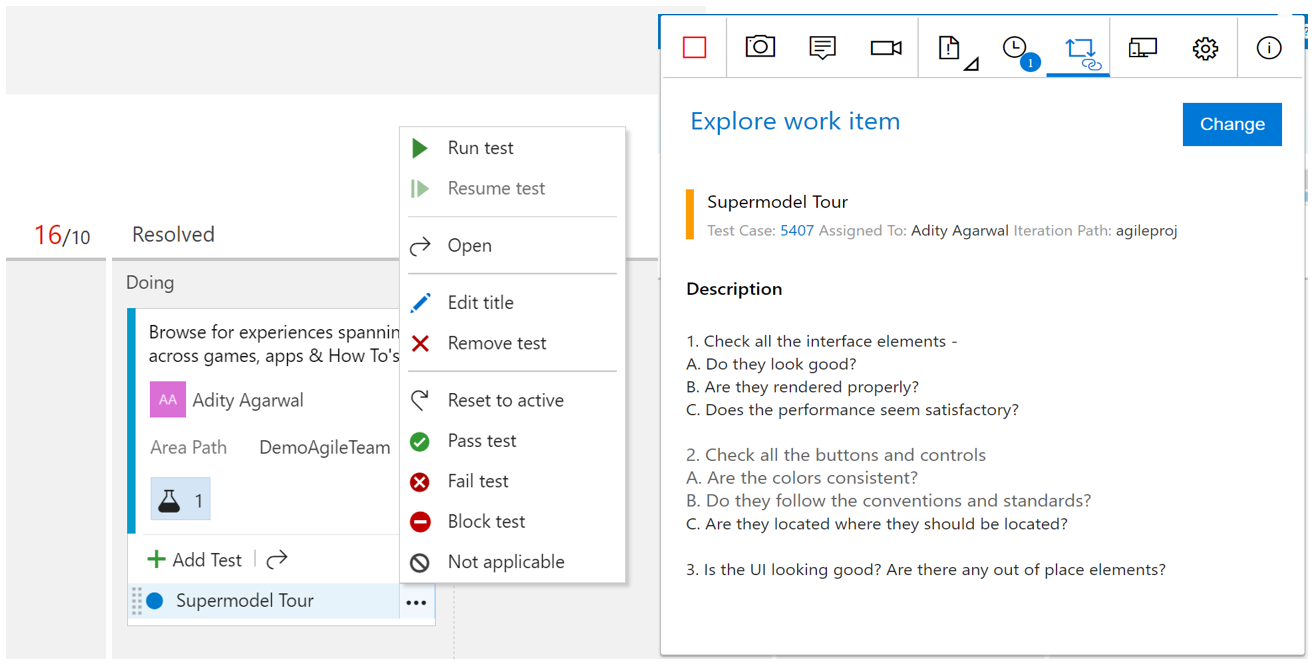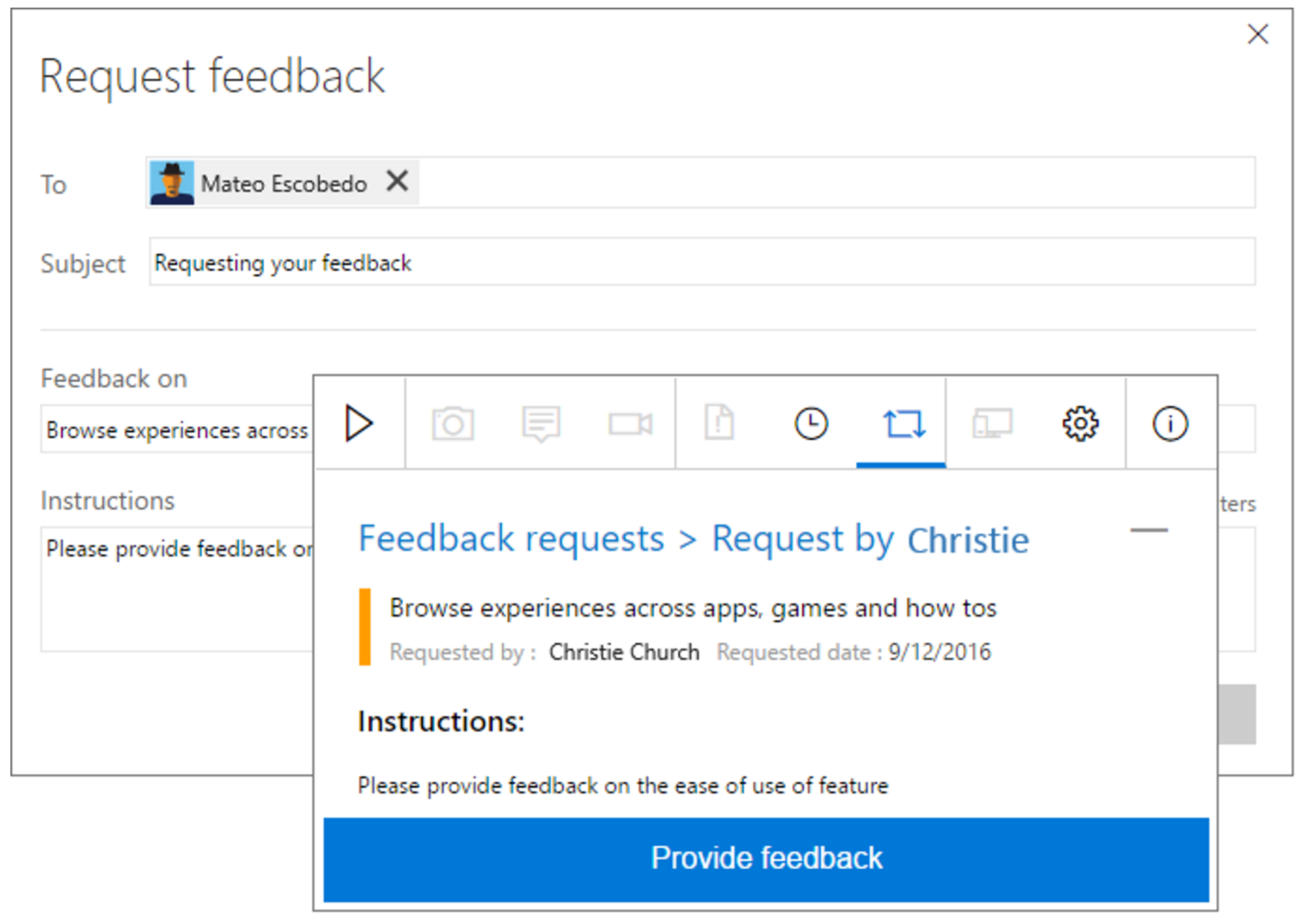Today, we are excited to announce the general availability of Test & Feedback extension (formerly Exploratory Testing extension), and this extension is free for all.
With agile practices becoming more prevalent, release cycles have become shorter. It doesn’t leave much time for teams to identify all scenarios, record the steps that need to be followed, plan their testing and getting testers to run all the tests within the sprint boundaries – and this needs to be repeated every sprint. Teams often try to compensate the lack of rigor in planned manual testing in such scenarios with automation. Automation though useful cannot completely replace the need for a human in the process. Thus in this age of shorter release cycles and over-reliance on automation, exploratory testing fills the gap nicely and ensuring that every release is a quality release. Moreover, it is an activity that should no longer be restricted to only testers. Organizations should encourage their entire teams – developers, product owners, marketing, designers, customers, and other stakeholders to participate in this activity as this will compound the benefits a team can reap from this simple, yet extremely important activity.
- Importance of a “brain in the loop” – In today’s world, we see more and more teams moving towards automation for their testing needs. While automated tests are useful and help in important scenarios such as finding regressions, they suffer from the fundamental shortcoming that they can only find those issues which they are programmed to find. To definitively find the answers to the fundamental questions, such as “Is this what the customer really wants?” we need a human in the process. Exploratory testing and the continuous feedback loop, by its very nature, helps organizations answer these questions as the human in the loop can help answer the question. The fact that they are flexible and unconstrained, and can take care of all the possible variations and scenarios, provides enough room for intelligent decision making during testing. This increases the chances of finding those nasty, hard to conceive bugs that are historically a typical cause of software failure.
- Exploratory Testing and feedback flow as a team activity – Software development is a team activity. It involves the coming together of all members of the team – the product owners, developers, designers, UI engineers, marketing, and more – and so testing should also be a team activity; and should involve all members of the team to ensure that the final package delivered will delight the customer in all aspects. As exploratory testing is a fairly simple exercise , it can be used by all members of the team to provide feedback. With development cycles become shorter, features evolving faster, and releases occurring more frequently, it becomes all the more important for all members of the team to participate in driving quality every time.
Test & Feedback extension
Test & Feedback extension (formerly Exploratory Testing extension) can be used by all teams to drive all their exploratory testing and feedback flows. It is a simple browser-based extension that runs in your browser, and can be used by the entire team for testing web apps across all platforms. It allows users to capture issues and provide feedback without having to worry about filling up long forms, collecting the appropriate data, reporting the issue, and other time consuming tasks usually associated with reporting issues.
The extension can be used in two modes: Connected mode and Standalone mode.
Connected mode is a fully functional mode that supports Visual Studio Team Services and Team Foundation Server 2015 and above.
- Users having Basic access level can use the full capture capabilities to submit rich bugs, tasks, and test cases, and use the collaboration capabilities such as E2E traceability, rich insights across completed sessions, simplified tracking and triaging of bugs and tasks, and more.
- Users with Stakeholder access level can use the full capture and create capabilities (except creating test cases) to manage and respond to feedback requests sent by the team, or they can provide feedback voluntarily. This feedback flow using the extension is available only in Team Services and Team Foundation Server “15” or later.
Standalone mode is a self-contained mode with no dependency on Visual Studio Team Services or Team Foundation Server. Any team, large or small, can use this mode to capture issues using screenshots with inline annotations and notes, then share the results using a session report.
There are multiple scenarios in which the extension can be used:
- Web design and development – The extension can be a valuable visual feedback tool for enterprises, web design agencies, and freelance web designers. Teams and clients can use Test & Feedback extension to quickly capture their findings on the page as a screenshot, and highlight the issue using annotations and notes. Optionally, users can also use screen recordings to capture those hard-to-describe actions and interactions frequently used in new-age web designs. Users can either submit their bugs or feedback directly to Visual Studio Team Services or Team Foundation Server, or chose to create comprehensive session reports for easy bug tracking and management. All bugs are automatically linked with technical details such as browser information, screen resolution, OS details, and more.

- Bug Bashes – Bug bashes are a regular feature for all agile teams. The Test & Feedback extension is an excellent tool for you to run bug bashes in the team. The team leader can specify the features, user stories, or product backlog items they want to run a bash on. All the participants can use the extension to explore the story they are assigned, and associate it to their exploratory testing session. As the participants bash the app, they can use the various capture modes to capture their findings and report issues. The defect or feedback submitted will automatically contain additional details that engineers can use to resolve the issue.Once the bug bash is over, the team can view the results and assess its effectiveness by using the exploratory session insights page. It provides rich insights at various levels, along with required details of the work items created. The data can be grouped on various pivots, and the easy to use layout can also be used for quick bug triaging and bug assignment after the bug bash. Due to its powerful integration with Visual Studio Team Services and Team Foundation Server, the Test & Feedback extension is the ideal tool for agile teams to drive bug bashes.

- Exploratory testing tours – Exploratory testing doesn’t mean that it has to be directionless. Although exploratory testing is unscripted, meaning there are no pre-defined test cases, it can be planned and structured in a way that provides a particular focus – such as how a user goes about exploring the product. With the Test & Feedback extension, users can easily perform scenario-based explorations or exploratory testing tours. You can add all kinds of tours such as the Supermodel tour, the Taxi cab tour, and more to the test case, depending on your requirement. (Read more about exploratory testing tours and the different kinds of tours in the book Exploratory Software Testing: Tips, Tricks, Tours and Techniques to Guide Manual Testers by James ). Before using the extension, list the scenarios and goals as part of a work-item, perhaps the test case work item. Then use the “explore work item” feature in the Test & Feedback extension to associate the test case (containing the scenario and goals) to the exploratory session, and start exploring the app based on the goals and scenarios you identified.

- E2E feedback flow – In addition to performing exploratory testing, the Test & Feedback extension can be used by stakeholders to respond to feedback requests, or to provide feedback voluntarily. Teams can now request feedback from selected stakeholders directly using the Request Feedback flow. This flow sends emails to the selected stakeholders, who can respond to the request using the Test & Feedback extension. All the responses received are created with the required traceability built in, so that they can be tracked by the team appropriately.

We will walk you through how you can use Test & Feedback extension for all your exploratory testing and feedback flows, through a series of blogs.
- Test & Feedback – Capture all your findings – This blog will talk in detail about the first step i.e. Capture. It will walk you through all the capture modes the extension supports and how you can use them to capture different kinds of issues.
- Test & Feedback – Create artifacts – This blog will talk in detail about the second step i.e. Create and how depending on your need you can create a host of rich actionable work-items that can be easily consumed by the team.
- Test & Feedback – Collaborate with your team – This blog will talk in detail about the third step i.e. Collaborate. We will expand on how teams can leverage the various capabilities like session reports, E2E traceability, stakeholder feedback flow, and other scenarios to collaborate with one another and drive quality among their teams.




0 comments